
Sri Lanka approves hybrid renewable energy project
Sri Lanka’s Cabinet of Ministers has given the green light to the development of a hybrid renewable energy project in Punarin, which includes 240 megawatts (MW) of wind and 800 MW of solar.
The move is in line with the Sri Lankan government’s plans to significantly expand renewable energy sources’ share of the nation’s power mix.
The Sri Lanka Sustainable Energy Authority (SLSEA) has identified the northern regions of the country as a suitable location to construct wind and solar power plants.
Under the proposal, the construction of the hybrid energy park will be built in three phases spanning two years.
The government recently unveiled its policy to add a considerable amount of electricity to the national grid through renewable energy sources.
Ceylon Electricity Board has set a target to increase electricity produced by renewables from the 10 per cent generated today, to 17 per cent by the end of 2019.
In March, the Cabinet announced the nation will issue an international tender to set up a 100 MW floating solar plant on the Maduru Oya Reservoir, in the east of the country.
Since then, Sri Lanka has announced it will allocate LKR350 million (US$2.29m) in the 2017 budget to implement its green building policy.
Source – 25/05/2017,Climate Action, See more at – http://www.climateactionprogramme.org/news/sri-lanka-approves-hybrid-renewable-energy-project

World is home to ‘60,000 tree species’
There are 60,065 species of trees in the world, according to a comprehensive study of the world’s plants. Botanical Gardens Conservation International compiled the tree list by using data gathered from its network of 500 member organisations. It hopes the list will be used as a tool to identify rare and threatened species in need of immediate action to prevent them becoming extinct. Details of the study appear in the Journal of Sustainable Forestry. The data revealed that Brazil was the nation with the greatest number of tree species, home to 8,715 varieties.
Source – ITN News, Read more at – https://www.itnnews.lk/world-news/world-is-home-to-60000-tree-species/

Snail’s DNA secrets unlocked in fight against river disease ? 1617 readers have read this article !
Scientists have decoded the genome of a snail involved in the spread of a deadly parasitic disease.
They say the information will help in the fight against schistosomiasis, an infection caused by a parasitic worm that lives in streams and ponds.
The disease affects millions of people a year in sub-tropical and tropical regions.
More than 100 researchers from around the world have unlocked the DNA secrets of a snail that transmits the parasite.
They say it will help in the understanding of the snail’s biology, including new ways to stop the parasite spreading to people.
“Having the knowledge means we can progress at a much faster pace at understanding the disease and reducing the number of people infected,” said Dr Joanna Bridger of the University of Brunel, a co-researcher on the study.
The snail (Biomphalaria glabrata) is found in South America.
Related snails are responsible for transmitting the parasite in sub-Saharan Africa, where most cases occur.
People become infected when larval forms of the parasite – released by freshwater snails – penetrate the skin in contaminated water.
In the body, the larvae develop into adult worms, which live in the blood vessels and release eggs.
Some of the eggs are passed out of the body to continue the parasite’s lifecycle.
Others become trapped in body tissues, causing damage to organs.
There is no vaccine for schistosomiasis and current control measures involve mass administration of the drug, praziquantel.
Scientists now hope to develop new treatments, perhaps by disrupting the snail’s mating habits.
The information will also be useful in tracking snail populations that differ in how they transmit the parasites.
“This work provides several inroads for control of Biomphalaria snails to reduce risks of schistosome (re) infection of endemic human populations, an important component of the WHO strategy aimed at elimination of the global health risks posed by schistosomiasis,” said the researchers in the journal, Nature Communications.
The research was led by Prof Coen Adema from the University of New Mexico.
Several UK research teams were involved, including the universities of Brunel, Aberdeen, Aberystwyth, Westminster, Kingston, Oxford, and the Natural History Museum.
Source – Ceylon Today, See more at – http://www.ceylontoday.lk/article20170401CT20170930.php?id=5134
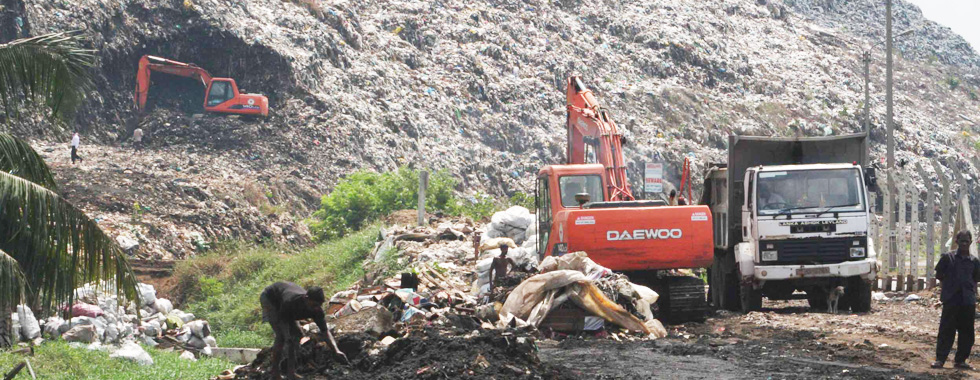
How San Francisco is Becoming A Zero Waste City
San Francisco has deployed its widely successful solid waste management programme based on the ambitious goal of zero waste by 2020. To ensure that no material goes to landfill or high temperature destruction, the city’s zero waste goal means that products are designed and used according to the principle of highest and best use. Zero Waste also means that discarded materials follow the waste reduction hierarchy: reduce, reuse, and then recycle or compost.
To meet its zero waste goal, San Francisco has used a three-pronged approach that addresses the legal, administrative, and social challenges of waste management reform. Specifically, the City enacted strong waste reduction policies; partnered with Recology, a like-minded materials management company, to innovate new programmes; and created a culture of recycling and composting.
http://www.c40.org/profiles/2013-sanfran
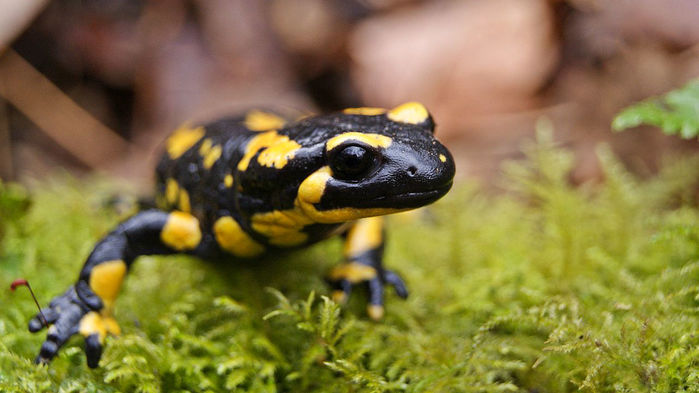
A deadly salamander disease just got a lot scarier
 Europe’s largest and best known salamander species, the fire salamander, is falling victim to a deadly fungus, and new research is making scientists more pessimistic about its future. A 2-year study of a population in Belgium, now entirely wiped out, has revealed that these amphibians can’t develop immunity to the fungus, as was hoped. To make matters worse, it turns out the fungus creates a hardy spore that can survive in water for months and also stick to birds’ feet, offering a way for it to spread rapidly across the continent. Two other kinds of amphibians, both resistant to the disease, also act as carriers for the highly infectious spores.
Europe’s largest and best known salamander species, the fire salamander, is falling victim to a deadly fungus, and new research is making scientists more pessimistic about its future. A 2-year study of a population in Belgium, now entirely wiped out, has revealed that these amphibians can’t develop immunity to the fungus, as was hoped. To make matters worse, it turns out the fungus creates a hardy spore that can survive in water for months and also stick to birds’ feet, offering a way for it to spread rapidly across the continent. Two other kinds of amphibians, both resistant to the disease, also act as carriers for the highly infectious spores.
“This is terrible news,” says geneticist Matthew Fisher of Imperial College London, who studies the fungus but was not involved in the new research. “This isn’t a problem that’s going to go away. It’s a problem that’s going to get worse.”
The pathogen, Batrachochytrium salamandrivorans (Bsal), is a chytrid fungus, a type that lives in damp or wet environments and typically consumes dead organic matter. Bsal infects and eats the skin of salamanders, causing lesions, apathy, loss of appetite, and eventually death. Over the past few decades, a related fungus, B. dendrobatidis (Bd), has struck hard at amphibian populations around the world, particularly in the Americas, Australia, Spain, and Portugal. More than 200 species of frogs and toads are thought to have gone extinct, including many kinds of Costa Rica’s striking stream-breeding toads.
http://www.sciencemag.org/news/2017/04/deadly-salamander-disease-just-got-lot-scarier
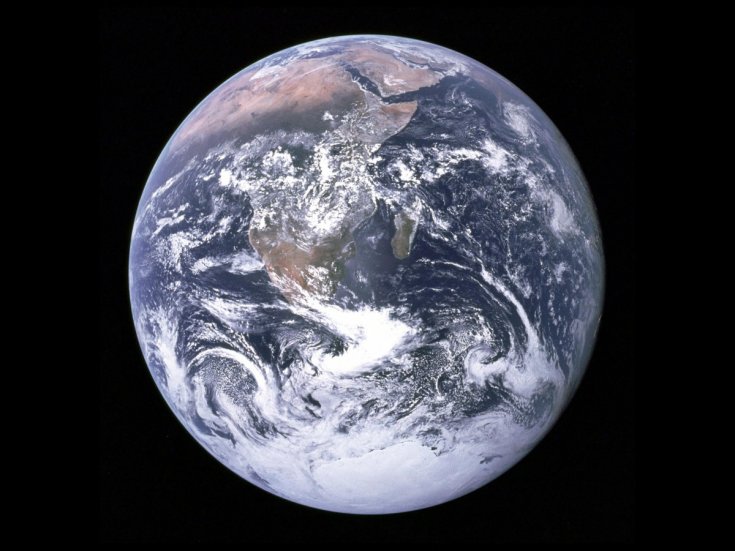
Earth Day is celebrated on 22 April 2017 in the hope of boosting climate literacy.
Earth Day is celebrated every year on 22 April, to honour our planet and shed a light on environmental issues that matter. It promotes an ideal of peace and sustainability for all.
This year’s campaign is dedicated to an ambitious goal – to achieve global climate and environmental literacy in the space of three years, by Earth Day 2020.
Source – 21/04/2017,International Business Times, see more at – http://www.ibtimes.co.uk/earth-day-2017-theme-events-all-you-need-know-about-global-campaign-1617809
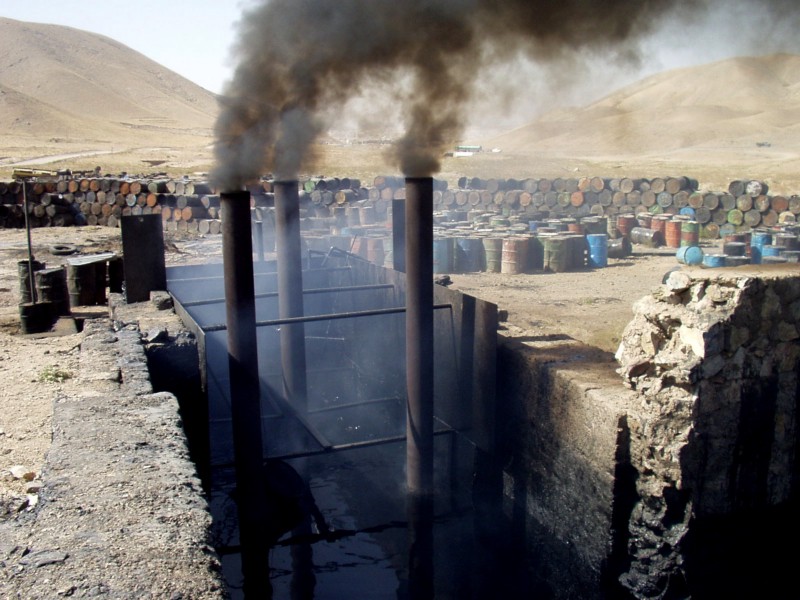
International Day for Preventing the Exploitation of the Environment in War and Armed Conflict
Working to Protect the Environment in Armed Conflict
(Measuring depleted uranium contamination with gamma meter. Djakovica, Kosovo.)
Protecting the environment in times of armed conflict is not a new idea. Even in ancient times, rules existed to ensure that natural resources essential for people’s survival, such as clean water, were protected. Unfortunately, the need to protect the environment in the context of armed conflict is more urgent today than ever before. Observing the International Day for Preventing the Exploitation of the Environment in War and Armed Conflict — which falls on this Sunday, November 6 — is a way of recognizing and striving to address the impacts of war on the environment.
During the 1900s, technological developments in weaponry carried with them unprecedented threats to and effects on the environment. In addition to the risks presented by conventional means and methods of warfare, environmental damage in connection with the testing or use of nuclear weapons loomed. The long-lasting effects of such testing became particularly visible to me when I visited the Marshall Islands earlier this year, as did the effects of remnants of war at sea for the small island states in the Pacific.
From the Vietnam War in the 1970s to the Iraq-Kuwait war in the 1990s, awareness of the environmental risks and damage grew slowly but surely. Many of us remember the shocking images of environmental destruction, such as “Agent Orange” in Vietnam or the burning oil wells in in Kuwait. In Kuwait, approximately 600 oil wells were set on fire, with some wells burning for more than eight months and causing severe damage to the environment in their wake. Iraqi areas and lands were also affected by the warfare. The efforts of Dr Mishkat Al-Moumin, Iraq’s first Minister of Environment, were critical in establishing governance structures for environmental protection in Iraq during her tenure in 2004–2005.
The burning of oil wells and other environmentally disastrous effects of the war once again awoke the international community to the effects of modern warfare on the environment. Similarly, more recent conflicts in the Former Republic of Yugoslavia, Kosovo, Iraq, Sierra Leone, Lebanon and Liberia all demonstrated the high environmental costs for war-torn societies.
(Spilled mercury in Pancevo, Serbia.)
In stride with the advances in warfare technology, the 1970s saw the birth of modern international environmental law, in particular through the Stockholm Declaration on the Protection of the Environment, concluded in 1972 at the United Nations Conference on the Human Environment. This conference also led to the establishment of the United Nations Environment Programme (UN Environment).
The environmental concerns raised in the wake of the Vietnam War and subsequent to the 1972 Stockholm Declaration were reflected in two important legal documents, namely the Convention on the Prohibition of Military or Any Other Hostile Use of Environmental Modification Techniques (ENMOD, 1976) and the First Additional Protocol to the Geneva Conventions (1977). Attempts to further codify and strengthen the protection of the environment during armed conflict were made in the aftermath of the Iraq-Kuwait war in the 1990s. The United Nations General Assembly discussed the matter, resolutions were adopted but in the end these attempts failed to arrive at any new legally binding protection measures.
However, one important and lasting result was the International Committee of the Red Cross and Red Crescent (ICRC) Guidelines for Military Manuals and Instructions on the Protection of the Environment in Times of Armed Conflict. Without formally approving these guidelines, the United Nations General Assembly invited all States to “give due consideration to the possibility of incorporating them into their military manuals and other instructions addressed to their military personnel” at its 49th session in 1994. The Guidelines were a recognition of the need to address the protection of the environment in operational terms.
(Remnants of war in Sudan.)
In 2009, UN Environment, the ICRC and the Environmental Law Institute made one of the first comprehensive analyses of how the many different areas of international law could protect the environment during armed conflict. This analysis examined not only international humanitarian law, but also environmental law, human rights law and international criminal law. It presented twelve recommendations available in the publication: “Protecting the environment during armed conflict: An Inventory and Analysis of International Law”.
Among the recommendations in the 2009 UN Environment report, the United Nations International Law Commission (ILC) was recommended to “examine the existing international law for protecting the environment during armed conflict and recommend how it can be clarified, codified and expanded”. Partly due to the fact that the recommendation came from another United Nations entity, the ILC examined it and as a result considered it apt for being placed on its long-term program of work in 2011. In 2013 the topic “Protection of the environment in relation to armed conflicts” was placed on the current program of work and I was honoured to be appointed Special Rapporteur for the topic.
The International Law Commission, set up in 1947, consists of 34 legal experts representing the principal legal systems of the world, that report to the General Assembly on topics where it identifies a need to codify or progressively develop international law. Over the years, the Commission has addressed topics such as the law of the sea, treaty law, international criminal law, and protecting persons in the event of disasters.

After having placed the topic Protection of the environment in relation to armed conflicts on the agenda our first challenge was how to deal with such a complex topic. The Commission decided to structure the topic into three temporal phases in order to examine the legal rules applicable before, during, and after the armed conflict. In my capacity as Special Rapporteur, I have presented the Commission with three reports that address the three temporal phases. The Commission has considered all three reports and as a result a set of draft ‘principles’ have been outlined. These principles gather existing obligations under international law, addressing gaps and allowing the Commission to provide a holistic set of draft principles to be considered by the General Assembly. The principles do not aim at re-writing the present law of armed conflict, but rather focus on preventive and post-conflict measures.
The principles include the need for post-conflict environmental assessments and remedial measures, the sharing and granting of access to information, to name just a few. They also address the environmental impact of peace operations, as well as the need to address matters relating to the restoration and protection of the environment damaged by an armed conflict in peace processes. The need to remove or render harmless toxic and hazardous remnants of war on land and in the sea is recognized, as is the important role of relevant international organizations.

In addition, the principles also encourage the establishment of protecting zones of major environmental and cultural interest. As we know, these areas can have a critical importance, both for protecting fragile ecosystems, and for ensuring the rights of local communities and indigenous peoples.
The work in the Commission is on-going and it is encouraging to note that our efforts come at a critical time, when concurrent efforts from other organizations are emerging. For instance, the ICRC guidelines are currently being revised to better reflect the developments since 1994. Indeed, one of the recommendations of the 2009 UN Environment report addressed the need to update the ICRC Guidelines, for instance to define key terms and examine protection of the environment during non-international armed conflicts. This suggestion and other recommendations were given further momentum by the fact that the 2011 ICRC report on Report on strengthening legal protection of victims of armed conflicts recognized environmental protection as one of the four areas of international humanitarian law that needed to be reinforced. That same year, Nordic countries issued a pledge on protection of the natural environment in times of armed conflicts at the 31st International Conference of the Red Cross and Red Crescent.
In addition, the resolution on the protection of the environment in areas affected by armed conflicts agreed by consensus at the United Nations Environment Assembly (UNEA-2) in May this year was a major signal of the commitment of United Nations Member States to confront the issue.

Not only is this resolution a positive signal in itself, but it will also establish synergies for the future between the on-going work of UN Environment, the ILC, as well as the important work undertaken by the ICRC on this topic. In addition, the engagement by civil society organisations contributes to develop these issues further. One example of such contributions comes from a partnership between UN Environment, academia and civil society to share best practices on environmental protection and peacebuilding through a knowledge platform.
In parallel, an important development for protection of the environment is happening in international criminal law. In September of this year, the Office of the Prosecutor of the International Criminal Court (ICC) published a policy paper on case selection and prioritisation, which clearly signals that environmental crimes are to be regarded as priority areas for the court in terms of determining the gravity of the crimes.
In summary, this year is set to be a milestone in our global efforts to protect the environment in connection with armed conflict. As the path for increased protection of environment in relation to armed conflicts continues, it is my hope that the momentum established by these concurrent tracks within the United Nations, the ICRC, the ICC and the ILC might serve to provide a holistic and integrated protection, for existing and future generations.
Source : 7/11/2016 UN Environment ,https://medium.com/@UNEP/working-to-protect-the-environment-in-armed-conflict-ce9aff1aa479#.v4kecldq3

World Environment Day 2016: 5 of Your Favourite Foods Predicted to Go Extinct
World Environment Day (WED) is one of the greatest annual events celebrated across the globe on 5th June. The objective of the event is to raise awareness about the leading issue of the sustainability of our environment. It was initiated in 1973 by the United Nations General Assembly and United Nations Environment Programme (UNEP) to address colossal issues like global warming, deforestation and food shortages among many others.
On World Environment Day, let’s awaken our conscience. With every passing year, the environment is getting degraded and rumours are afloat that if this continues, we might not be able to devour our favourite foods in the foreseeable future. Scientists have estimated that over two-thirds of flora and fauna that once inhabited the Earth are now extinct. Studies are now suggesting that certain human-induced environmental changes caused their eradication.
This year’s theme for World Environment Day is ‘Join the race to make the world a better place’. Here are five foods that our future generations could be deprived of, because of changes in the climate and our environment.
1. Honey, where art thou?
Thinking of adding a spoonful of honey to your morning smoothie? Or how about your favourite honey chilli potatoes? Stock up on this liquid gold as a United Nations scientific report warns that 2 out of 5 honeybee populations are on the path to extinction. Simon Potts, Director of the Centre for Agri-Environmental Research in England remarked, “We are in a period of decline and there are going to be increasing consequences.”

Bees are responsible for pollinating more than 250,000 species of plants, including more than 90 food crops. So, the decline in the population of bees could also affect the food supply. The possible cause of this is the high use of insecticides and pesticides in farming which are lethal for the bees and other pollinators. The use of herbicides also hinders the work of pollinators since it eliminates the wildflowers and weeds which are usually helpful in the process. Robert Watson, a British Ecological Scientist said
that England has now started paying it’s farmers to plant wildflowers for bees in hedge rows.
A study published in the journal ‘Science’ shows that due to changing temperature and weather conditions, bees have failed to migrate and many populations have died. While some animals may have adjusted, the research on bees suggests that they don’t possess the ability to adjust easily to new environments.
2. Goodbye chocolate!
Andrew Jarvis, leader of the decision and policy analysis Program at International Centre for Tropical Agriculture (CIAT) says that although chocolate is not essential for our survival, it can help in raising awareness about the increasing rate of climatic changes by “hitting people’s soft spots.”
The core issue here, is that due to rising temperatures and constant change in weather patterns, it is difficult to produce cocoa. The rising temperature leads to ‘evapotranspiration’ in the cocoa trees which makes them lose more water into the air and thereby lowering its yielding capacity. Scientists have predicted that chocolate production will significantly diminished by 2030. It has also been predicted that in the next 40 years, the temperature in Ghana and Cote d’Ivoire, where 70% of cocoa is grown, is set to rise by 2°C. This will make the climate too hot and dry for growing cocoa trees.

3. Sorry, no coffee or wine with that
According to a research conducted by UK’s Royal Botanical Gardens, Arabica and Robusta, which are the main sources of coffee would suffer greatly because of environment changes. It also revealed that the number of locations where Arabica coffee grows would decrease by 85% by 2080. High temperature and extreme conditions are leading to coffee rust and fungus that are invading many plantations. Another problem is depleting water supplies. Severe drought in Brazil, flooding in Honduras and Vietnam running out of water shows that the problems have already started surfacing.
Climate is the most critical aspect for the ripening of fruit to its best quality in the production of wine. It has been seen, that the world’s premium wine regions are under threat due to hotter and unpredictable weather like Bordeaux and Rhone regions in France, Tuscany in Italy and Napa Valley in California.

4. The plunging future of seafood
Due to global warming, the temperature of the sea has started to rise, causing a sharp decline of a number of water-species. If the planktons, which are kind of algae and shrimps found in oceans and seas, were to go extinct, it would definitely have an impact on the population of fish and other seafood. UK’s Government Chief Scientific Advisor, Sir Mark Walport declared that “Thanks to man-made CO2, the acidity of oceans has increased by 25% since the dawn of the industrial revolution”. This threatens a whole wide range of ocean species.

5. King Corn – No More?
Bad news for corn lovers. According to a study in the journal of Science titled ‘Climate change curbs crops’, it has been reported that the global corn production has been nearly 4% lower than it would have been if the climatic changes were slowed down. This is happening due to global warming. Just 1 degree Celsius rise in temperature, decreases the rate of corn production by as much as 7%. Corn is also a major feeding source of livestock, so a lower production of corn would mean expensive meat.

Deforestation and Palm Oil
While our favourite foods may be disappearing, the production of those that are not really needed is on a rise. One such product is the Palm Oil, which could be a reason for the loss of our favourite foods.
Palm oil is a type of edible vegetable oil that is derived from the palm fruit. It can grow and flourish wherever heat and rainfall are abundant. Where does the problem lie? Tropical forests are being cleared to make space for palm oil plantations. Thus, carbon dioxide is released in the atmosphere along with other greenhouse gases, elevating global warming. Top fast food brands in the world use palm oil to fry and bake their foods. Hence, they play a key factor in aggravating the situation by being a major buyer of palm oil.
According to the World Wildlife Fund, “an area equivalent to the size of 300 football fields of rainforest is cleared each hour to make way for palm oil production. This large-scale deforestation is pushing many species to extinction.” A new industry standard of deforestation-free palm oil has emerged. Sustainable palm oil is an approach to oil palm plantation which aims to produce palm oil without endorsing deforestation. Palm oil is present in a wide range of products which includes: baked goods, confectionery, washing detergents, shampoo and cosmetics.
We know that we should conserve our resources (reduce, reuse and recycle), which helps in lessening the impact of human activities on the natural ecosystem but we rarely do anything about it. This is easy to achieve by making small changes like switching to organic food as chemical fertilizers emit a great amount of greenhouse gases. You should also prefer locally grown food because they do not require transportation which can impact the pollution levels. It has been further seen that the way food is grown, has a greater impact in reducing carbon emissions than the over-all emission as a result of shipping. Do your bit and you’ll still be enjoying your favourites on the dinner table many years from now.
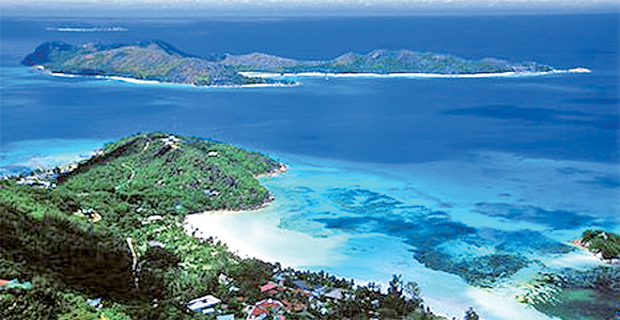
Seychelles – Sri Lanka : Meeting maritime conservation goals
Water is an important resource, key to development and life. Fresh water is being depleted or contaminated by pollution daily. Pollution and sediment due to land activities degrade coastal zones and marine areas, especially corals and fish. We need to work together with clear guidelines and monitoring programmes to make sure we are doing our best to safeguard water resources. The conference tries to address these issues and find financing, especially for developing countries. It is the first time that this conference is organised in our region. The organising body – Global Environment Facility (GEF) – is financing huge projects around the world
Although relations between Seychelles and Sri Lanka go back about 27 years, there was a boost in diplomatic relations in the recent past with the opening of Sri Lankan and Seychelles embassies in 2014. Apart from cooperation in tourism, the most notable area of cooperation is in the maritime sector. Seychelles employs a large number of teachers from Sri Lanka apart from other professionals and has a sizeable Sri Lankan community working in Seychelles.
Seychelles’ economy mostly depends on eco-tourism and gives emphasis to environmental conservation and energy security. Seychelles Environment, Energy and Climate Change Minister Didlier Dogley spoke in detail with the Daily News about his government’s efforts to achieve energy conservation goals, while he was here to participate in the Inter-Water Resource Management Conference organised by the Global Environment Facility at Negombo, recently.
Following are extracts of the interview:

Seychelles Environment, Energy and Climate Change Minister Didlier Dogley
|
Q: What are the key areas under discussion at the conference?
A: Over 300 participants in the International Water Resource Management Conference, working on trans-boundary and marine water issues, share experiences at this conference to find ways for upscale financing and technology to tackle problems internationally.
Water is an important resource, key to development and life. Fresh water is being depleted or contaminated by pollution daily. Pollution and sediment due to land activities degrade coastal zones and marine areas, especially corals and fish. We need to work together with clear guidelines and monitoring programmes to make sure we are doing our best to safeguard water resources. The conference tries to address these issues and find financing, especially for developing countries. It is the first time that this conference is organised in our region. The organising body – Global Environment Facility (GEF) – is financing huge projects around the world.
One of the areas that we talked about is the high seas, especially between Seychelles and Mauritius. GEF will be providing assistance to resolve issues in this regard.
Q: Should we be worried at the rate at which climate change is affecting the environment?
A: We should be very worried. There is massive coral bleaching all over India and it can be seen in the South of Sri Lanka as well. Even Australia’s Great Barrier Reef is affected. If we lose our corals, we lose our marine life and this will erode coastal areas. Seychelles depends a lot, not only on tourism but also on fisheries. Our tourism depends on the quality of the coastal environment. So it is important to bring measures to protect our marine environment.
Q: Would mega projects such as land reclamation have detrimental impacts on marine life?
A: I think the process of how you do it needs to be very clear. Even in the Seychelles we had to reclaim land. But the way you do it should be a well thought-out process.
There needs to be an Environment Impact Assessment and people should be consulted.
There should also be an Economic Benefit Analysis to see if the project makes sense in the long term. But I don’t think reclamation is a totally bad thing but it needs to be thought-out properly and objectively.
Q: What are the Seychelles’ key energy conservation programmes?
A: We are very much for energy conservation and sustainable development. We are doing a study right now, after the government took a decision to go for 100 percent renewable energy. At the moment, we depend on fossil fuels and we import heavy oils for electricity.
That costs us about 10 percent of our GDP of our annual national budget. If you take that money and invest in solar and wind energy, we can become totally independent. Countries have signed the Paris Agreement to reduce their carbon footprint. We have obligations to meet. First you need to achieve energy security, which means you don’t depend on fuel from outside.
Q: How are the Seychelles and Sri Lanka cooperating on conserving the marine environment?
A: We’ve got excellent working relations with the government of Sri Lanka. The Colombo International Nautical Engineering College (CINEC) – the marine campus – has signed an agreement with our maritime school whereby our sea-men and women are trained to be able to manage and tap into our marine environment.
Our fisheries industry boats are being built in Sri Lanka. On the maritime side, there is a lot of cooperation between Sri Lanka and Seychelles.
Q: What are the best practices adopted by Seychelles for waste management and protecting bio-diversity?
A: We are concerned about bio-diversity. We have protected areas. It has a return for us since it can turn into eco-tourism magnets. We have an extensive protected area network and are investing in eco-tourism. We understand that when the environment is healthy, it can better withstand impacts such as climate change. We have been investing a lot on sewer management, the sea and rivers meet the required standards. We are working hard to recycle as much as possible. We have zero-waste targets. Waste is also collected and exported to India and China where they are recycled as we can’t recycle in Seychelles as our volume is too small. We are also working on recycling 50 percent of our organic waste to turn it into bio-gas to produce energy.
Q: There was talk in the recent past about Sri Lankan government plans to close its High Commission in Seychelles, established during the past government. How would this have impacted on relations between the two countries?
A: I can certainly speak on behalf of our side. We have an embassy in Colombo established about three years ago. We saw the potential of working together with Sri Lanka. In the past, we always turned to Sri Lanka. When we had a shortage of teachers, we asked Sri Lanka to help us out. Today, there are plenty of Sri Lankans working in Seychelles in various sectors such as education, engineering, tourism etc.
We have a new vision of a ‘Blue Economy’ to tap into sustainability in marine sectors. We believe there is a lot we can learn from Sri Lanka in the marine sector. This is why the government established an embassy here. We don’t have a lot of embassies in the region. We have one in India, one in China and one in Colombo. So the decision to open one here speaks volumes.
We want to align ourselves with Sri Lanka in some of the sectors. We believe in building cooperation between our two countries. This is why we opened an embassy and will keep it open as long as we can. In the past, developing countries always looked towards developed countries. But some of the solutions were not there. We can cooperate in the South between each other, because certain countries have made progress in one direction, while others in another direction depending on policies and interests. So it makes more sense for South-South cooperation. For us, Sri Lanka presents us with certain opportunities which we would like to pursue.
Q: How is Seychelles cooperating with Sri Lanka in Sri Lankan government investigations into fraud and corruption, especially with regard to offshore bank accounts in Seychelles?
A: Seychelles is already cooperating with the Sri Lankan government through the Finance Investigation Unit in Seychelles with regard to investigation into any fraud and corruption. Seychelles has signed the Organisation for Economic Cooperation and Development (OECD) guidelines for offshore banking.
We keep offshore dealings transparent. All information on transactions can be inspected and checked by authorised bodies.
For each account that is opened in Seychelles, owners have to be declared, unlike earlier. Every year, all jurisdictions are reviewed. If you look up the internet, you will see that Seychelles is one of the countries that is clean. If in doubt, authorised bodies can check transactions after a formal request.
The Seychelles government has been working with the Panama jurisdiction and there is definitely interest in the offshore banking system. We’ve been following all the international rules, making sure that our systems are clean. We have made sure that we are not allowing the wrong people into our country. So if there is any investigation, Seychelles will cooperate as long as it is reciprocal on both sides.
Source:19 May 2016 Daily News (Sri Lanka)
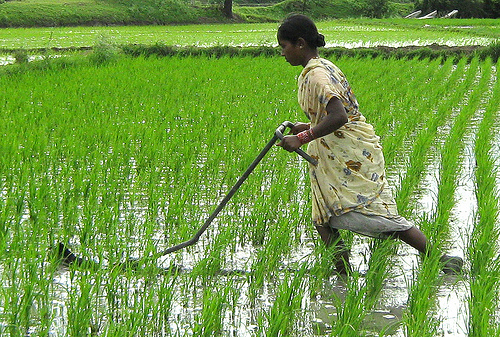
WFO Calls for Farmer-Centred Sustainable Development
LIVINGSTONE, Zambia, May 09 (IPS) – Over 600 delegates representing at least 570 million farms scattered around the world gathered in Zambia from May 4-7 under the umbrella of the World Farmers’ Organisation (WFO) to discuss climate change, land tenure, innovations and capacity building as four pillars on which to build agricultural development.
Among the local delegates was Mary Nyirenda, a farmer from Livingstone, where the assembly was held.
“I have a 35-hectare farm but only use five hectares due to water stress. With one borehole, I am only able to irrigate limited fields. I gave up on rainfall in the 2013/14 season when I lost about five hectares of maize to drought,” Nyirenda told IPS.
Privileged to be part of the 2016 WFO General Assembly, Nyirenda hoped to learn innovative ways to improve productivity and market access for her garden and poultry produce. But did the conference meet her expectations?
(Mary Nyirenda in her garden at her farm in Livingstone, Zambia. Credit: Friday Phiri/IPS)
“Yes it has, especially on market access. I’ve learnt that working as groups gives us a strong voice and bargaining power. I’ve been struggling on my own but now I understand that two is better than one, and so my task from here is to strengthen our cooperative which is still disjointed in terms of producer partnerships,” said Nyirenda, emphasising the power of farmer organisations – for which WFO exists.
Convened under the theme ‘Partnerships for Growth’, the clarion call by delegates throughout the conference was to change the narrative that, while they are at the centre of a multi-billion-dollar food sector, responsible for feeding the whole world, farmers are the world’s poorest people.
And WFO President Evelyn Nguleka says the situation has to change. “It is true that farmers in almost all corners of the world constitute the majority poor, but the question is why?” asked Nguleka while responding to journalists during the closing WFO General Assembly Press briefing.
She said the meeting established that poor organisation and lack of information were the major reasons for farmers’ lack of progress, noting, “If farmers remain in isolation, they will continue to be poor.”
“It is for this reason that we developed a legal tool on contract farming, which will be mostly useful for smallholders whose knowledge on legal matters is low, and are easily taken advantage of,” said David Velde, president of the National Farmers Union in the U.S. and a board member of WFO.
Velde told IPS that various tools would be required to help smallholders be well equipped to fully benefit from their work, especially in a world with an unstable climate, a sub-theme that found space in all discussions at the conference due to its multifaceted nature.
With technology transfer being one of the key elements of the sustainable development agenda as enshrined in the Paris climate deal, delegates established that both innovation and capacity building for farmers to improve productivity cannot be discussed in a vacuum.
“Agriculture is indeed a global sector that needs serious attention. The fact that a world farmers’ organization exists is a sign that food production, food security, climate change are global issues that cannot be looked at in isolation. Farmers need information on best methods and technologies on how best to enhance productivity in a climate conscious manner,” said Zambian President Edgar Lungu in his address to the WFO General Assembly.
In the world’s quest to feed the hungry 793 million people by 2030, and and the projected population growth expected to reach 9.6 billion by 2050, more than half in Africa, WFO is alive to the huge task that its members have, which can only be fulfilled through increased productivity.
“WFO is in recognition that the world has two conflicting issues on face value—to feed the world and mitigate climate change. Both require huge resources but we believe that it is possible to tackle both, through increased productivity using latest technology,” said William Rolleston, president of the Federated Farmers of New Zealand.
Rolleston, who is also Vice President of WFO, told IPS that while WFO’s work does not involve funding farmers, it helps its members to innovate and forge partnerships for growth.
It has long been recognised globally that climate change, if not tackled, could be a barrier to the achievement of Sustainable Development Goals (SDGs). And this presented, perhaps, the hardest of choices that world leaders had to make—tackling climate change, with huge implications on the world’s productive capacity, which has over the years largely relied on a carbon intensive economy.
By approving the SDGs and the historic climate agreement last year, the world’s socio-economic agenda is set for a complete paradigm shift. However, WFO President Evelyn Nguleka wants farmers to remain the focus of the world’s policies.
“Whatever changes the world decides moving forward, it should not be at the expense of farmers to survive and be profitable,” she stressed.
For Nyirenda, access to markets holds the key to farmers’ productive capacity, especially women, who, according to FAO, constitute half of the global agricultural labour force, while in Africa, the figure is even higher—80 percent.
“My interactions with international organisations such as IFAD and others who are interested in women empowerment was a serious-eye opener moving forward,” she said.
Source: Inter Press Service–(May 2016)












